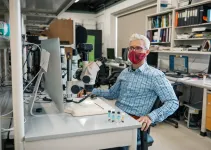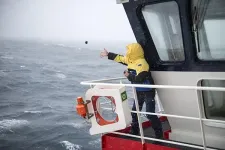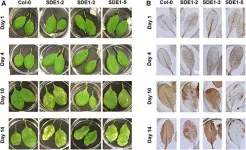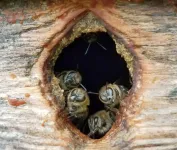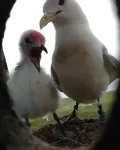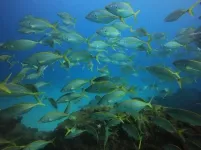Fighting respiratory virus outbreaks through 'nano-popcorn' sensor-based rapid detection
Researchers develop novel sensor for the improved detection of influenza A viruses, with high reproducibility
2021-01-21
(Press-News.org) Viral respiratory diseases are easily transmissible and can spread rapidly across the globe, causing significant damage. The ongoing covid-19 pandemic is a testament to this. In the past too, other viruses have caused massive respiratory disease outbreaks: for example, a subtype of the influenza virus, the type A H1N1 virus, was responsible for the Spanish flu and the Swine flu outbreaks. Thus, to prevent such health crises in the future, timely and accurate diagnosis of these viruses is crucial. This is exactly what researchers from Korea have attempted to work toward, in their brand-new study. Read on to understand how!
For several decades now, polymerase chain reaction (PCR)-based assays have been the gold standard for detecting influenza viruses. And while these assays are highly sensitive, they can require expensive reagents and complicated protocols. A potentially better alternative can be "surface-enhanced Raman scattering" (SERS). SERS-based assays work by depositing a liquid sample onto a substrate material with a nanostructured noble metal surface. Viral particles from the samples are detected when they hybridize with substrate-bound "aptamers," molecules that can bind to specific target molecules. This binding is visually detected as a change in "signal intensity," which decreases as viral load increases due to conformational changes on the substrate. However, a major drawback of these assays is the poor reproducibility of signals from heterogeneous hot junctions (electron-dense regions that contribute to signals).
In an attempt to overcome this challenge, the aforementioned researchers from Chung-Ang University and Korea Institute of Materials Science, led by Professor Jaebum Choo, designed a novel 3D "nano-popcorn" plasmonic substrate. Speaking of the significance of their study published in Biosensors and Bioelectronics, Prof Choo says, "Infectious disease, caused by respiratory influenza, SARS, MERS, and SARS-2 viruses, can spread periodically and are a threat to global health. Our SERS-based aptasensor approach provides a new diagnostic platform for respiratory infectious diseases in the future."
In their design, the scientists coated two layers of gold particles on a polymer substrate using thermal evaporation sequentially. The two coats were separated by treatment with a compound called "perfluorodecanethiol: (PFDT). The energy difference between PFDT and gold layer was what caused the gold ions to diffuse to the surface, forming nanoparticles that appear as uniformly spaced "popcorns." This arrangement collectively strengthened the signal intensity that was produced, by generating multiple "hotspots" on the substrate.
The scientists then assessed the performance of the assay using different concentrations of the H1N1 virus. They successfully detected different viral loads in merely 20 minutes and from a minute volume of 3 μL (3 microliters: a 1000th part of 3 ml). Moreover, the system could also classify different strains of influenza viruses accurately and detected H1N1 viruses at a sensitivity three-fold higher than that of the routinely used ELISA tests. Not just this, the assay was found to be highly reproducible. Pleased with the results, Prof. Choo states, "Our assay system enabled the ultrasensitive and reliable analysis of the influenza virus. Such a method would enable early-stage diagnosis, facilitate antiviral treatment initiation, and provide infection surveillance, particularly for those at high risk for virus-related complications."
In fact, the team is confident that their findings can, someday, be used to fight the current pandemic. Prof. Choo says, "We are currently developing a SERS-based aptasensor for the rapid diagnosis of the coronavirus from human respiratory samples. We are also developing a new diagnostic approach to differentiate between influenza A viruses and coronaviruses."
Hopefully, the new "nano-popcorn" assay can help to fight many major health crises in the future.
INFORMATION:
Reference
Authors: Hao Chen, Sung-Gyu Park, Namhyun Choi , Joung-Il Moon, Hajun Dang, Anupam Das, Seunghun Lee, Do-Geun Kim, Lingxin Chen, Jaebum Choo
Title of original paper: SERS imaging-based aptasensor for ultrasensitive and reproducible detection of influenza virus A
Journal: Biosensors and Bioelectronics
DOI: 10.1016/j.bios.2020.112496
Affiliations:
Department of Chemistry, Chung-Ang University, South Korea
Advanced Nano-Surface Department, Korea Institute of Materials Science (KIMS), South Korea
CAS Key Laboratory of Coastal Environmental Processes and Ecological Remediation, Chinese Academy of Sciences, China
About Chung-Ang University
Chung-Ang University is a private comprehensive research university located in Seoul, South Korea. It was started as a kindergarten in 1918 and attained university status in 1953. It is fully accredited by the Ministry of Education of Korea. Chung-Ang University conducts research activities under the slogan of "Justice and Truth." Its new vision for completing 100 years is "The Global Creative Leader." Chung-Ang University offers undergraduate, postgraduate, and doctoral programs, which encompass a law school, management program, and medical school; it has 16 undergraduate and graduate schools each. Chung-Ang University's culture and arts programs are considered the best in Korea.
Website: https://neweng.cau.ac.kr/index.do
About Professor Jaebum Choo
Dr Jaebum Choo is a Professor at the Department of Chemistry, Chung-Ang University. He obtained a PhD in Molecular Spectroscopy at Texas A&M University, following which he was a faculty member at Hanyang University. Previously, Prof Choo served as the Director of the Center for Integrated Human Sensing System and Bionano Fusion Technology Program and is currently the Director of the Biomedical Diagnostics Research Center. His research interests include SERS, biosensors, micro-devices, and molecular spectroscopy in addition to developing ultrasensitive optical nano-sensor systems for rapid and sensitive in vitro diagnostics of infectious diseases. He has authored several research articles in peer-reviewed journals.
[Attachments] See images for this press release:
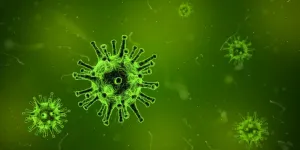
ELSE PRESS RELEASES FROM THIS DATE:
2021-01-21
An international study coordinated by the Research Group for Urban Nature and Biosystems Engineering (NATURIB) from the University of Seville's School of Agricultural Engineering emphasises that having plants at home had a positive influence on the psychological well-being of the dwelling's inhabitants during COVID-19 lockdown. Researchers from the Hellenic Mediterranean University (Greece), the Federal Rural University of Pernambuco (Brazil) and the University of Genoa (Italy) participated in the study along with representatives from the University ...
2021-01-21
Did you know that fleas, ants, and click beetles are capable of blazingly fast accelerations, with some up to 10^6 meters per square-second? Their quick movements make fast animals like the cheetah look like slowpokes.
A new study by a team that included Jake Socha, professor in biomedical engineering and mechanics in Virginia Tech's College of Engineering, published in the journal Proceedings of the National Academies of Sciences shows that a snap-through unbending movement of the body is the main reason for the clicking beetle's fast acceleration.
Most animals use muscle to move. For example, when we want to bend our elbow, our biceps ...
2021-01-21
Countries where massive natural hazard events occur frequently are not more likely than others to make changes to reduce risks from future disasters. This is shown in an interdisciplinary Uppsala University study now published in Nature Communications.
Natural hazard events, such as storms, floods, and wildfires, entail huge and growing costs all over the world, but they can also be occasions for countries to implement risk-reducing changes. There is no research consensus on whether natural hazard events lead to policy modifications or, instead, contribute to stability and preservation of existing solutions. Knowledge in this area to date has been ...
2021-01-21
JUPITER, FL - In a landmark neurobiology study, scientists from Scripps Research have discovered a memory gating system that employs the neurotransmitter dopamine to direct transient forgetting, a temporary lapse of memory which spontaneously returns.
The study adds a new pin to scientists' evolving map of how learning, memory and active forgetting work, says Scripps Research Neuroscience Professor Ron Davis, PhD.
"This is the first time a mechanism has been discovered for transient memory lapse," Davis says. "There's every reason to believe, because of conservation ...
2021-01-21
An extra 290,000 pounds a year for lighting and cleaning because smog darkens and pollutes everything: with this cost estimate for the industrial city of Manchester, the English economist Arthur Cecil Pigou once founded the theory of environmental taxation. In the classic "The Economics of Welfare", the first edition of which was published as early as 1920, he proved that by allowing such "externalities" to flow into product prices, the state can maximise welfare. In 2020, exactly 100 years later, the political implementation of Pigou's insight has gained strength, important objections are being invalidated, and carbon pricing appears more efficient than regulations and bans according to a ...
2021-01-21
Scientists from the CNRS, CNES, IRD, Sorbonne Université, l'Université Toulouse III - Paul Sabatier and their Australian colleagues*, with the support of the IPEV, have provided a comprehensive analysis on the evolution of Southern Ocean temperatures over the last 25 years. The research team has concluded that the slight cooling observed at the surface hides a rapid and marked warming of the waters, to a depth of up to 800 metres. The study points to major changes around the polar ice cap where temperatures are increasing by 0.04°C per decade, which could have serious consequences for Antarctic ice. Warm water is also rising rapidly to the surface, at a rate of 39 metres per decade, i.e. between three and ten ...
2021-01-21
Citrus greening disease, also known as Huanglongbing (HLB), is devastating to the citrus industry, causing unprecedented amounts of damage worldwide. There is no known cure. Since the disease's introduction to the United States in the early 2000s, research efforts have increased exponentially. However, there is still a lack of information about the molecular mechanism behind the disease.
"Getting into the molecular details behind what contributes to citrus greening symptom development and disease progression is key to finding sustainable solutions to combat the pathogen," explained plant pathologist Wenbo Ma. "We bring the community one step closer to understanding these mechanisms ...
2021-01-21
Understanding the genetic and environmental factors that enable some feral honey bee colonies to tolerate pathogens and survive the winter in the absence of beekeeping management may help lead to breeding stocks that would enhance survival of managed colonies, according to a study led by researchers in Penn State's College of Agricultural Sciences.
Feralization occurs when previously domesticated organisms escape to the wild and establish populations in the absence of human influence, explained lead researcher Chauncy Hinshaw, doctoral candidate in plant pathology and environmental microbiology.
"In the case of honey bees, colonies that escape domestication and establish in the wild provide an opportunity to study how environmental and genetic factors ...
2021-01-21
Muscle structure and body size predict the athletic performance of Olympic athletes, such as sprinters. The same, it appears, is true of wild seabirds that can commute hundreds of kilometres a day to find food, according to a recent paper by scientists from McGill and Colgate universities published in the Journal of Experimental Biology.
The researchers studied a colony of small gulls, known as black-legged kittiwakes, that breed and nest in an abandoned radar tower on Middleton Island, Alaska. They attached GPS-accelerometers--Fitbit for birds -- ...
2021-01-21
Warming ocean waters could reduce the ability of fish, especially large ones, to extract the oxygen they need from their environment. Animals require oxygen to generate energy for movement, growth and reproduction. In a recent paper in the Proceedings of the National Academy of Science, an international team of researchers from McGill, Montana and Radboud universities describe their newly developed model to determine how water temperature, oxygen availability, body size and activity affect metabolic demand for oxygen in fish.
The model is based on physicochemical principles that look at oxygen consumption and diffusion at the gill surface in relation to water temperature and body size. Predictions were compared against actual measurements from over 200 fish species where oxygen ...
LAST 30 PRESS RELEASES:
[Press-News.org] Fighting respiratory virus outbreaks through 'nano-popcorn' sensor-based rapid detection
Researchers develop novel sensor for the improved detection of influenza A viruses, with high reproducibility


